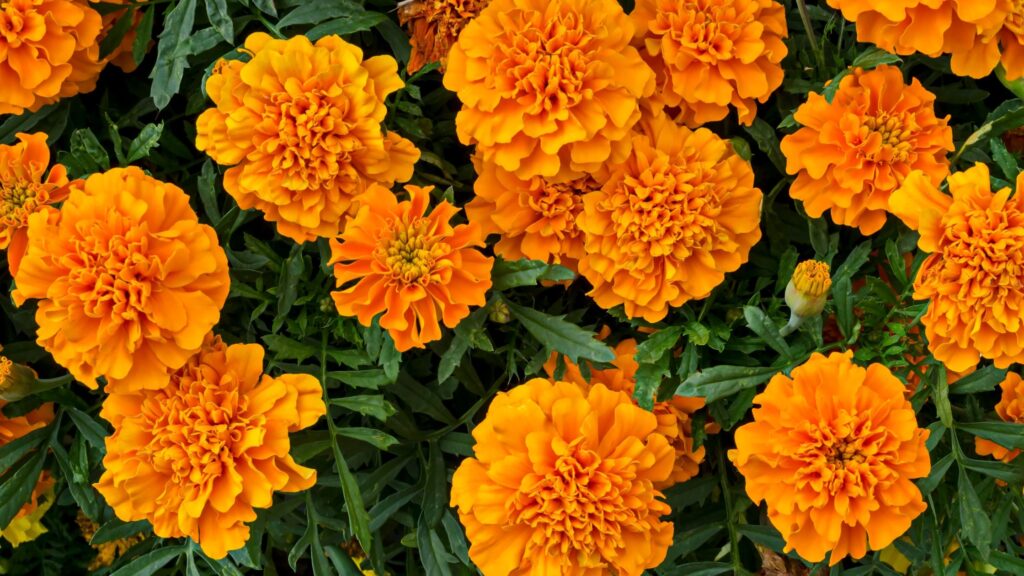Highest Producer of Marigolds in the World?
Marigolds—beloved for their vibrant hues, cultural significance, and versatile uses—are cultivated extensively across the globe.
However, one nation stands out as undisputedly the top producer. This article delves into the Highest Producer of Marigolds in the World.
We are also discussing global marigold production, highlighting India’s dominance, exploring contributing factors, comparing international players, and considering future trends.
Global Overview & India’s Dominance
According to Lodhi Garden, India accounts for approximately 70% of the world’s marigold production, cultivating over 250,000 metric tonnes annually. This commanding lead firmly establishes India as the largest marigold producer globally.
In terms of exports, data from Volza underscores India’s global market strength: India leads worldwide with 22,571 export shipments (56% of total), far surpassing China (4,082 shipments, 10%), Thailand (2,492, 6%), and other producers (Volza). Another dataset lists India at 24,144 shipments (53%), reinforcing its dominant export position.

Why India? Key Drivers of Leadership
Several pivotal factors contribute to India’s unrivalled production, and it is the Highest Producer of Marigolds in the World.
1. Favourable Climate & Soil
India’s tropical and subtropical regions—from Karnataka to West Bengal—offer ideal conditions for marigold cultivation. The diversity in soils (from sandy loams to clay-rich ground) further supports widespread cultivation.
2. Deep Cultural & Religious Demand
Marigolds are central to Indian religious rituals, festivals (like Diwali, Ganesh Chaturthi, and Navaratri), weddings, and temple offerings. This enormous domestic demand sustains year-round production.
3. Value-Added Commercial Applications
Rich in lutein and carotenoids, marigold petals are used as natural pigments in food colouring, cosmetics, poultry feed, and eye-health supplements. India’s grower base exports these extracts to markets in the USA, Europe, and beyond.
4. Labour-Intensive Yet Cost-Effective Farming
Marigold cultivation and harvesting are labour-intensive. India’s abundant rural workforce allows efficient garland-making and harvesting, keeping production costs competitive.
Marigold Production within India
Breaking down further, India’s marigold production is concentrated in these top-producing states (2021–2022 data):
| Rank | State | Production (tonnes) |
| 1 | Madhya Pradesh | ~224,870 tonnes (29.8%) |
| 2 | Karnataka | ~121,930 tonnes (16.1%) |
| 3 | Gujarat | ~84,280 tonnes (11.0%) |
| 4 | Andhra Pradesh | ~76,420 tonnes (8.4%) |
| 5 | West Bengal | ~63,440 tonnes (8.4%) |
These figures reflect the immense scale and geographic spread of marigold farming across India. Madhya Pradesh, Karnataka, and Gujarat stand out as the country’s leading producers.
Other Countries Produce Marigolds.
While India dominates, several countries contribute to cultivation or exports, and also the highest Producer of marigolds in the World
- Mexico: The marigold’s native land remains an important producer, particularly for Día de los Muertos celebrations.
- China: Cultivates marigolds for carotenoid extraction and exports pigments for use in poultry and food industries.
- In the United States, Spain, and France, marigolds are grown mainly for ornamental use and essential oils.
- Thailand, Nepal, Peru, and others: Show rising export activity, though production remains modest compared to India’s massive output.
Cultural & Commercial Significance
Beyond production, marigolds serve myriad purposes:
- Ritual & Decorative Uses: In India and Mexico, they are indispensable in rituals—whether adorning temples and altars or forming garlands.
- Industrial Uses: Marigold extracts rich in lutein are widely used in cosmetics, natural dyes, health supplements, and poultry feed to enhance yolk colour.
- Medicinal Properties: Marigolds have anti-inflammatory, antimicrobial, and wound-healing properties and are used in skincare and traditional medicines.
Challenges & Future Outlook.
Challenges:
- Climate Sensitivity: Yield can be volatile due to erratic monsoons or temperature shifts.
- Price Fluctuations: Seasonal shifts and local oversupply can swing market rates unpredictably.
- Pests/Diseases: Aphids, powdery mildew, and other issues necessitate effective pest management strategies.
Opportunities:
- Rising Extract Demand: Growth in natural pigment and lutein markets could drive marigold extract exports from India and China.
- Pharmaceutical Research: Studies on marigold’s health benefits may spur broader medicinal applications.
- Agri-Entrepreneurship: Value-added products such as essential oils, dyed fabrics, or floral tourism offer new income streams.
- Organic Cultivation: Government initiatives promoting organic farming (e.g., in India and the Asia-Pacific) may transform production practices.
Conclusion
In summary:
- India is by far the world’s largest producer of marigolds, contributing roughly 70% of global production and dominating export markets.
- India’s supremacy stems from climate advantages, cultural demand, industrial applications, and labour economics.
- Within India, Madhya Pradesh, Karnataka, and Gujarat lead in state-level output.
- Countries like Mexico, China, and the United States also contribute, but are far behind.
- Continuing demand for natural pigments, extracts, and cultural usage suggests the sector has robust future potential—even amid challenges like weather volatility and market fluctuations.
India’s marigold bloom is more than agricultural—it’s cultural, industrial, and emblematic of vibrant traditions. As global interest in natural, sustainable products rises, Marigold’s golden prospects are only set to deepen.